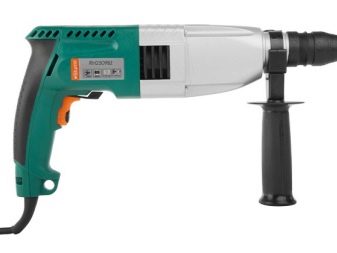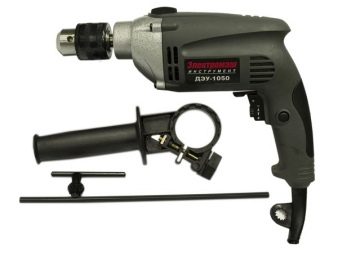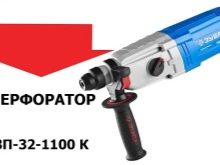Drill and hammer drill: what is the difference and which is better to choose?

Periodic renovations in an apartment can make anyone think about buying their own tools. The modern market provides a wide variety of units for various jobs. Many of them have similar functions. And then a dilemma arises: what is more needed? One of the most common pairs of these tools is the hammer drill and hammer drill. To make a choice, you need to know their characteristics and the expected tasks that they will have to perform.


Hammer drill
This tool is mainly intended for drilling various materials. But its design includes a special percussion mechanism that allows the drill to make striking movements during operation. It's like hitting a hammer. The function helps to work with durable building materials:
- brick;
- concrete;
- stone.
As a rule, this device has a switch that changes the simple drilling mode to hammer drilling. At the same time, it is necessary to understand that a conventional drill is not enough for crushing strong materials, therefore a nozzle with a victorious tip is used. In addition, this tool is not designed for strong impacts with a large amplitude of longitudinal movements of the drill. Beating movements are carried out within a few millimeters, so they can rather be described as vibration of the drill during the operation of the tool.


The impact force of a drill depends to a large extent on the force of pressing on the tool, therefore, in order to make a hole in a durable material, you need to make significant efforts, which is not suitable for everyone.
But the drilling capabilities of this tool do not end there. Attachments in the form of grinding wheels are perfect for the drill, on the sticky surface of which you can fix any sandpaper. This helps to sand the painted surface or putty on any material. Also, with the help of attachments, you can turn an ordinary drill into a brush for removing coloring compounds from metal. When using twisted wire, the processing will be rough, with corrugated wire - finishing.
Thanks to its fast rotating movements, this machine can mix cement or putty: just insert the mixer plug. The number of such attachments is varied, making the drill a fairly versatile unit.


Perforator
This machine is designed for drilling, chiselling and breaking parts of particularly durable surfaces, such as reinforced concrete. It is used not only when doing housework, but also in professional construction.
A perforator not only punches concrete walls, but also splits tiles and bricks, removes plaster. It is also convenient for them to perform chasing (hollowing out a recess in the wall for wiring). At the same time, the special design of the handle and its material dampen vibration almost completely. Therefore, when working, the return is minimal.


This tool also has several modes of operation:
- shock;
- drilling;
- blow + drilling.
The force applied to it depends on the operating mode of the punch. When working with the percussion type, it is not necessary to additionally press on the tool, in contrast to drilling and even more drilling.
It should be noted here that only drills and blades are inserted directly into the hammer drill. Drill bits require an additional adapter.



Tool characteristics
When choosing a hammer drill, it is necessary to take into account the main indicators of impact energy.It is measured in joules. A professional device can have an impact force of up to 15 joules, while a home device can only have 1–2 joules. The higher this indicator, the more efficiently the perforator works, and the larger holes it punches. If such a tool has too little impact force, then it will drill more into the wall than drill, and the nozzle will quickly fail.
The second important indicator is the frequency of the striking movements. The more beats per minute the apparatus makes, the faster it will punch a hole. But more speed means more wear on parts in less time. That is why it is worth choosing only high-quality and well-known brands that have already proven themselves. Parts of such tools are made of higher quality materials. They are designed for increased loads.
The power in this equipment is not strategically important. The standard is 800 to 1200 W, depending on the type of cartridge used.


The frequency of rotation of the shaft is also not fundamental, unlike a drill. It's all about the purpose of this function in the hammer drill. Rotation of the nozzle during chiselling is performed to remove the destroyed material, and not to create a depression.
In addition, the drill bits have a large diameter, and it is difficult for a low-power engine to rotate them at high speed. A large engine significantly increases the weight of the unit, which complicates its operation. That is why the standard rotational speed of the shaft in the rock drill fluctuates at an average level (from 600 to 1500 rpm).


And another important criterion for evaluating the tool is the type of chuck for installing drills and drills.
The punch has three of them:
- SDS plus (the tool weighs 4 kg and punches holes up to 3 cm in diameter);
- SDS max (weight - up to 11 kg, diameter - up to 5.2 cm);
- SDS-top (average weight with a hole diameter of 1.6-2.5 cm).
The latter type of chuck is practically universal, it is installed mainly on Bosch rotary hammers and is optimal for home repairs.
As for the characteristics of the drill, the beat frequency does not play a key role here, since the maximum efficiency in the hammer mode is achieved by pressing the tool firmly. This is the main difference between rock drill and hammer drill specifications.



To successfully perform its main functions in a drill, power and shaft speed are important. The average power of the drill is 500–900 watts. If it is supposed to be used as a mixer, then this indicator should be significant. Then the tool will not overheat during use. However, the higher the power, the greater the weight of the apparatus. Therefore, for homework, it is better to choose average characteristics.
As for the shaft speed, it must be large. At its high value, the holes are drilled evenly. In a home drill, a high RPM helps to compensate for low power. Drill chuck type - cam or key. In the jaw drill, it can be clamped quickly and without the use of additional force. This simplifies and speeds up the process of changing the nozzle. The key cartridge is distinguished by the presence of an additional device in the form of a small key. It takes time to replace the nozzle, but as practice shows, such models break less often.

How to make a choice
From all of the above, the following conclusion can be drawn. If you choose between a hammer drill and an impact drill, then you need to be clear about what tasks you will have to perform with this tool.
For chiselling, chiselling and drilling, a hammer drill should be preferred. If you do not intend to knock out recesses or remove partitions, then an impact drill will be the best assistant in home repairs. Choosing a quality tool from a good manufacturer, you can get not only a drill, but also a hand-held concrete mixer and a grinding machine.

However, when buying any tool, you need to pay attention to a number of additional characteristics:
- the presence of a relay for switching speeds;
- the presence of a soft start function;
- the ability to fix the button during operation;
- handle shape;
- additional equipment.
Ease of use of the device often depends not only on the power and availability of recoil, but also on the comfortable grip of the device. A comfortable handle with smooth transitions and indentations for fingers can greatly facilitate work.

As for the additional equipment, brand manufacturers put consumables in the kit. Most often this is a minimal set of drills or drill bits, a spare chuck and lubricant. The presence of these add-ons allows you to get started almost immediately after purchase. In addition, buying these parts separately, there is a risk of overpaying, since the difference in the price of the kit and individual attachments is striking. And on a complete branded device, you can save a certain amount.
In the next video, you will find a review of the Sturm RH2591P rotary hammer.













The comment was sent successfully.